#Sir James Goldsmith
Explore tagged Tumblr posts
Text

Casa Cuixmala | Sir James Goldsmith | studio_magga
31 notes
·
View notes
Text




Baronet -> Coal-miners -> Royalty
“A time may yet come, perchance, when a descendant of one of these simple artizans may arise, not unworthy of the Conyers' ancient renown; and it will be a gratifying discovery to some future genealogist, when he succeeds in tracing in the quarterings of such a descendant the unsullied bearing of Conyers of Durham." Sir Bernard Burke, 1861.
In 1861 the genealogist and publisher of Burke’s Peerage Sir Bernard Burke, in his book "Vicissitudes of Families", dedicated a chapter to the “The Fall of Conyers" which concludes with the following: "Magni stat nominis umbra! The poor Baronet left three daughters, married in very humble life: Jane, to William Hardy; Elizabeth, to Joseph Hutchinson; and Dorothy, to Joseph Barker, all working men in the little town of Chester-le-Street. A time may yet come, perchance, when a descendant of one of these simple artizans may arise, not unworthy of the Conyers' ancient renown; and it will be a gratifying discovery to some future genealogist, when he succeeds in tracing in the quarterings of such a descendant the unsullied bearing of Conyers of Durham."
Sir Thomas Conyers, was the 9th and last Baronet Conyers of Horden Hall. While a gentleman at birth, he was reduced to poverty and resided at the Durham Workhouse. His pride made him reject financial aid from his distant relatives, among them his second cousin Mary Eleanor Bowes, Countess of Strathmore, whose funeral he attended at Westminster Abbey in 1800. At the time she was one of the wealthiest women in England and is an ancestor of Elizabeth Bowes-Lyons, the late Queen Mother.
His later years were made somewhat more comfortable at the aid of another distant cousin, George Lumley-Saunderson, the 5th Earl of Scarborough who provided him with a small house. Sir Thomas died a pauper on 15 April 1810. His surviving children, three daughters had married working men in the little town of Chester-le-Street, County Durham. As if from a Thomas Hardy novel, his daughter Jane married a man named William Hardy.
For five generations Sir Thomas Conyers descendants would work as labourers, and often in coal mines once owned by distant ancestors and now owned by the Bowes-Lyon family. By the sixth generation his descendant Robert Harrison, a carpenter left his family still working in the coal mines to seek opportunities in London. There he married and had a daughter, Dorothy who married a builder named Ronald Goldsmith.
The early years of Dorothy and Ronald’s marriage and their children's upbringing were spent in a comfortable council house, providing the security needed to buy their own home. Their daughter, Carole, became a flight attendant and married a young flight dispatcher, Michael. They settled in Berkshire and spent a few years in Jordan, working for British Airways, before returning to Berkshire, where Carole started her own business at her kitchen table.
Almost ten generations and 201 years after Sir Thomas Conyers died a pauper, his descendant Catherine Middleton married Prince William of Wales on 29 April 2011.
Family Line
Sir Thomas Conyers 9th Bt. Conyers of Horden (drawing) m. Isabel Lambton
Jane Conyers of Chester Le Street, County Durham m. William Hardy of
Jane Hardy of Biddick, County Durham m. James Liddell
Anthony Liddell of Little Lumley, County Durham m. Martha Stephenson
Jane Liddell (photo) m. John Harrison
John Harrison (photo) m. Jane Hill
Robert Harrison (photo) m. Elizabeth Temple
Dorothy Harrison (photo) m. Ronald Goldsmith
Carole Goldsmith m. Michael Middleton
Catherine Middleton m. Prince William of Wales
#ktd#brf#british royal family#kate middleton#princess of wales#prince william#Carole Middleton#The north#england#northern england#durham#coal#mining#elizabeth bowes lyon#the queen mother#queen mother
105 notes
·
View notes
Text
A list of all the books mentioned in Peter Doherty's journals (and in some interviews/lyrics, too)
Because I just made this list in answer to someone's question on a facebook group, I thought I may as well post it here.
-The Picture of Dorian Gray/The Ballad Of Reading Gaol/Salome/The Happy Prince/The Duchess of Padua, all by Oscar Wilde -The Thief's Journal/Our Lady Of The Flowers/Miracle Of The Rose, all by Jean Genet -A Diamond Guitar by Truman Capote -Mixed Essays by Matthew Arnold -Venus In Furs by Leopold Sacher-Masoch -The Ministry Of Fear by Graham Greene -Brighton Rock by Graham Green -A Season in Hell by Arthur Rimbaud -The Street Of Crocodiles (aka Cinnamon Shops) by Bruno Schulz -Opium: The Diary Of His Cure by Jean Cocteau -The Lost Weekend by Charles Jackson -Howl by Allen Ginsberg -Women In Love by DH Lawrence -The Tempest by William Shakespeare -Trilby by George du Maurier -The Vision Of Jean Genet by Richard Coe -"Literature And The Crisis" by Isaiah Berlin -Le Cid by Pierre Corneille -The Paris Peasant by Louis Aragon -Junky by William S Burroughs -Absolute Beginners by Colin MacInnes -Futz by Rochelle Owens -They Shoot Horses Don't They? by Horace McCoy -"An Inquiry On Love" by La revolution surrealiste magazine -Idea by Michael Drayton -"The Nymph's Reply to The Shepherd" by Sir Walter Raleigh -Hamlet by William Shakespeare -The Silver Shilling/The Old Church Bell/The Snail And The Rose Tree all by Hans Christian Andersen -120 Days Of Sodom by Marquis de Sade -Letters To A Young Poet by Rainer Maria Rilke -Poetics Of Space by Gaston Bachelard -In Favor Of The Sensitive Man and Other Essays by Anais Nin -La Batarde by Violette LeDuc -Lolita by Vladimir Nabokov -Intimate Journals by Charles Baudelaire -Juno And The Paycock by Sean O'Casey -England Is Mine by Michael Bracewell -"The Prelude" by William Wordsworth -Noise: The Political Economy of Music by Jacques Atalli -"Elm" by Sylvia Plath -"I am pleased with my sight..." by Rumi -She Stoops To Conquer by Oliver Goldsmith -Amphitryon by John Dryden -Oscar Wilde by Richard Ellman -The Song Of The South by James Rennell Rodd -In Her Praise by Robert Graves -"For That He Looked Not Upon Her" by George Gascoigne -"Order And Disorder" by Lucy Hutchinson -Man Crazy by Joyce Carol Oates -A Pictorial History Of Sex In The Movies by Jeremy Pascall and Clyde Jeavons -Anarchy State & Utopia by Robert Nozick -"Limbo" by Samuel Taylor Coleridge -Men In Love: Masculinity and Sexuality in the Eighteenth Century by George Haggerty
[arbitrary line break because tumble hates lists apparently]
-Crime And Punishment by Fyodor Dostoevsky -Innocent When You Dream: the Tom Waits Reader -"Identity Card" by Mahmoud Darwish -Ulysses by James Joyce -The Four Quartets poems by TS Eliot -Julius Caesar by William Shakespeare -A'Rebours/Against The Grain by Joris-Karl Huysmans -Prisoner Of Love by Jean Genet -Down And Out In Paris And London by George Orwell -The Man With The Golden Arm by Nelson Algren -Revolutionary Road by Richard Yates -"Epitaph To A Dog" by Lord Byron -Cocaine Nights by JG Ballard -"Not By Bread Alone" by James Terry White -Anecdotes Of The Late Samuel Johnson by Hester Thrale -"The Owl And The Pussycat" by Edward Lear -"Chevaux de bois" by Paul Verlaine -A Strong Song Tows Us: The Life of Basil Bunting by Richard Burton -Don Quixote by Miguel de Cervantes -The Divine Comedy by Dante Alighieri -The Jungle Book by Rudyard Kipling -The Man Who Would Be King by Rudyard Kipling -Ask The Dust by John Frante -On The Trans-Siberian Railways by Blaise Cendrars -The 39 Steps by John Buchan -The Overcoat by Nikolai Gogol -The Government Inspector by Nikolai Gogol -The Iliad by Homer -Heart Of Darkness by Joseph Conrad -The Volunteer by Shane O'Doherty -Twenty Love Poems and A Song Of Despair by Pablo Neruda -"May Banners" by Arthur Rimbaud -Literary Outlaw: The life and times of William S Burroughs by Ted Morgan -The Penguin Dorothy Parker -Smoke by William Faulkner -Hero And Leander by Christopher Marlowe -My Lady Nicotine by JM Barrie -All I Ever Wrote by Ronnie Barker -The Libertine by Stephen Jeffreys -On Murder Considered As One Of The Fine Arts by Thomas de Quincey -The Void Ratio by Shane Levene and Karolina Urbaniak -The Remains Of The Day by Kazuo Ishiguro -Dead Fingers Talk by William S Burroughs -The England's Dreaming Tapes by Jon Savage -London Underworld by Henry Mayhew
112 notes
·
View notes
Text


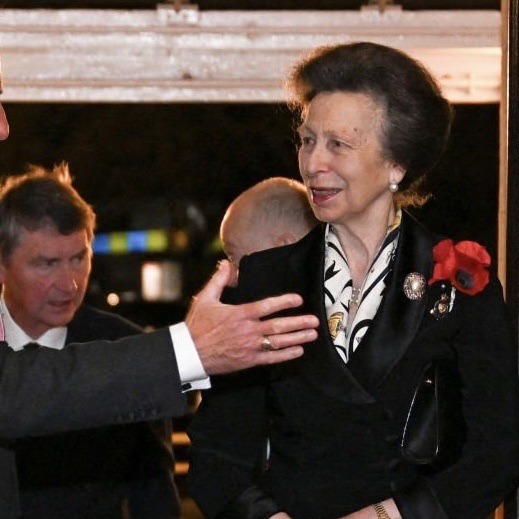



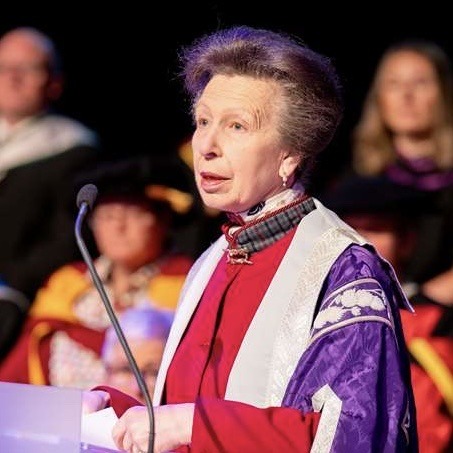
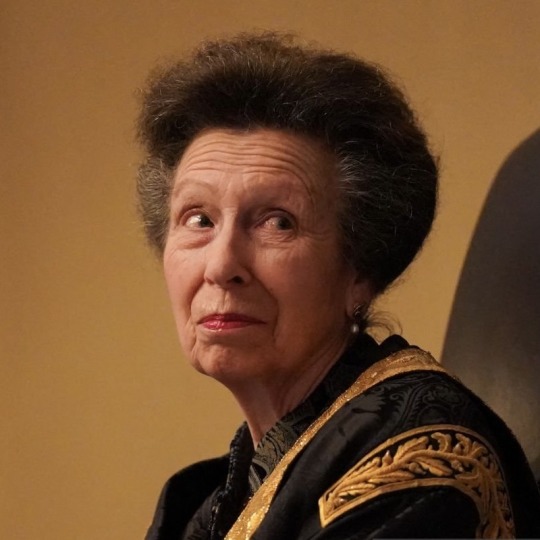
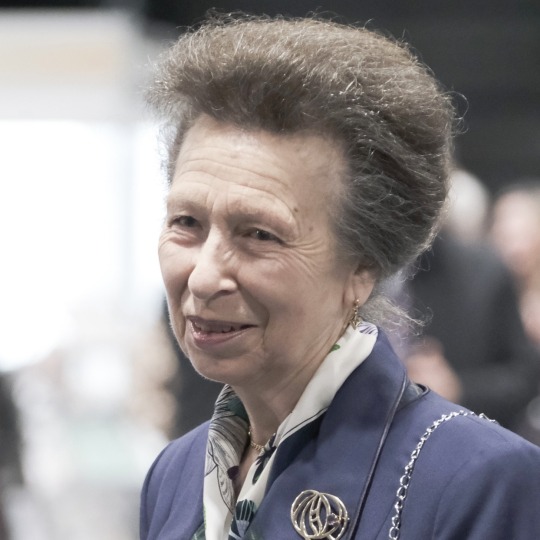
The Princess Royal’s Official Engagements in November 2024
01/11 As Visitor of Strathcarron Hospice, visited the Hospice. 🫂
As Deputy Colonel-in-Chief of The Royal Regiment of Scotland, visited the Headquarters at Edinburgh Castle. 🫡
As Patron of the Eric Liddell 100, attended an Awards Dinner at George Watson’s College, in Edinburgh. 🏃🏼♂️🍽️🏆
05/11 As Master of the Corporation of Trinity House, presented Merchant Navy Medals for Meritorious Service at the Corporation of Trinity House. 🎖️
As President of Racing Welfare, attended a Reception at Sladmore Gallery. 🏇🏼
06/11 On behalf of The King, held an Investiture at Windsor Castle. 🎖️
As Patron of the Learning and Work Institute, and as President of Carers Trust, this attended the “Driving Change” Conference at City Lit College. 📒
As President of The Duke of Edinburgh’s Commonwealth Study Conferences, attended a Reception at Brunswick Group. 📚
As Patron of Shaftesbury, later held a 180th Anniversary Dinner at St James’s Palace. 🍾
07/11 As Vice Patron of the British Horse Society, attended the Annual Awards and Race Day at Newbury Racecourse. 🐴
Alongside the King and the Duchess of Gloucester, held a Reception at Buckingham Palace for medallists of the Paris 2024 Olympic and Paralympic Games. 🥇🥈🥉
09/11 With Sir Tim Was present at the Royal British Legion Festival of Remembrance at the Royal Albert Hall. Also in attendance were, The Prince and Princess of Wales, The Duke and Duchess of Edinburgh, The Duke and Duchess of Gloucester, and The Duke of Kent were also present. 🌹
10/11 With Sir Tim Attended the National Service of Remembrance at the Cenotaph. Laid a wreath alongside the King, the Prince of Wales and the Duke of Edinburgh. Also in attendance were, the Princess of Wales, the Duchess of Edinburgh, the Duke and Duchess of Gloucester and the Duke of Kent. 🌹
11/11 unofficial Sir Tim, as GWR Advisory Board member, visited Swindon train station with the Poppies to Paddington, then travelled to Paddington Station by train. 🚝
unofficial Sir Tim Attended a Service of Remembrance at Paddington Station. 🌹
12/11 Attended the HIV Drug Therapy Glasgow Congress at the Scottish Event Campus. 💊
Visited the University of Glasgow’s Mazumdar-Shaw Advanced Research Centre. 🔬🥼
As Royal Patron of MND Scotland, attended a Supporters’ Reception at the MND Scotland Office. 🍾
13/11 Visited the College of Master Kilt Tailors’ Headquarters at Askival of Strathearn. 🪡🏴
Opened Letham4All’s Letham Community Hub. 🏢
Opened the YMCA Tayside Youth Centre in Perth. 👦👧
As Chancellor of the University of Edinburgh, held a Chancellor’s Dinner at the Palace of Holyroodhouse. 🎓🍽️
14/11 As Chancellor of the University of the Highlands and Islands, attended the Nursing and Optometry Graduation Ceremony in Inverness. 🩺🎓
16/11 As Patron of the Scottish Rugby Union, attended the International Rugby Match between Scotland and Portugal at Murrayfield Stadium in Edinburgh. 🏴🇵🇹🏉
19/11 Attended a Reception at the Suffolk County Council Offices before opening the Gull Wing Bridge in Lowestoft. 🌁🎗️✂️
Unofficial Sir Tim presented the Billy Deacon SAR Awards during the Air League’s Annual Reception Ceremony at the House of Commons. ✈️
20/11 As President of the Royal Yachting Association attended the British Olympic Sailing Team Luncheon at the Royal Thames Yacht Club. ⛵️🍴
As Commandant-in-Chief (Youth) of St John Ambulance, attended the Young Achievers’ Reception at the Priory Church of the Order of St John in London. ⛑️🩹
As Chancellor of the University of London, attended the Foundation Day at Senate House, and conferred an honorary doctorate in Literature on Queen Camilla, for her public work in the field of literature and literacy. 📜🎓
21/11 As Patron of the Royal College of Anaesthetists, attended their Winter Symposium. 💉❄️
As President of the City and Guilds of London Institute, attended The Princess Royal Training Awards Conference at Goldsmiths’ Hall. 🏆 Sir Tim Laurence presented the Billy Deacon SAR Awards during the Air League’s Annual Reception Ceremony, held at the House of Commons, on 19 November 2024.
With Sir Tim As President of the British Olympic Association, attended the Team GB Ball at the Roundhouse. ✨
26/11 Opened the Hospice UK National Conference at the Scottish Event Campus in Glasgow. 🏥
27/11 As Chancellor of the Health Sciences University, attended a Graduation Ceremony at the Bridge Theatre in London. 🎓📜
As Patron of Transaid, attended the Annual Showcase at the Africa Centre in London. 🚛🚚
As Royal Fellow of the Royal Academy of Engineering, attended a New Fellows’ Dinner at Drapers’ Hall. 🍽️
28/11 On behalf of the King held morning and afternoon Investitures at Buckingham Palace. 🎖️
29/11 As Patron of the Moredun Foundation, attended a Conference at the Moredun Research Institute in Penicuik. 🐖🐑🐄
Total official engagements for Anne in November: 43
2024 total so far: 414
Total official engagements accompanied/represented by Tim in November: 3
2024 total so far: 94
FYI - due to certain royal family members being off ill/in recovery I won't be posting everyone's engagement counts out of respect, I am continuing to count them and release the totals at the end of the year.
#hardest working royal#princess anne#we have seen tim at a lot of his own engagements this month but they aren’t included on the CC so not counted in my calculations sadly#operation working royal tim 2025 🫡#princess royal#tim laurence#timothy laurence#november 2024#aimees unofficial engagement count 2024
36 notes
·
View notes
Text


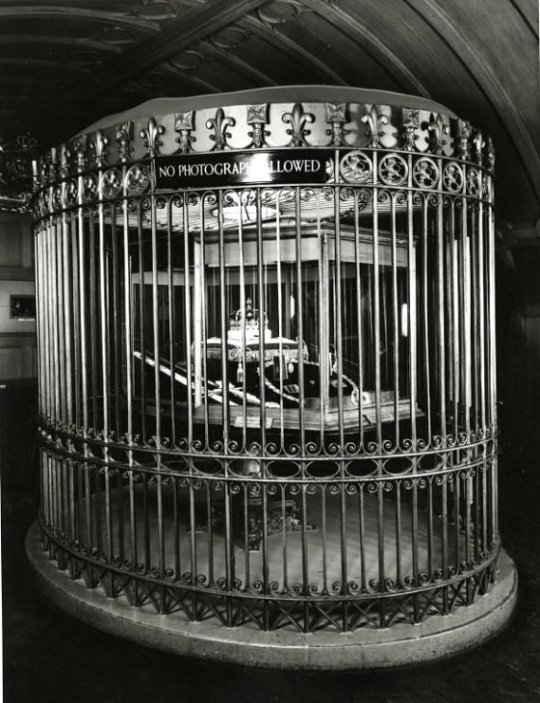

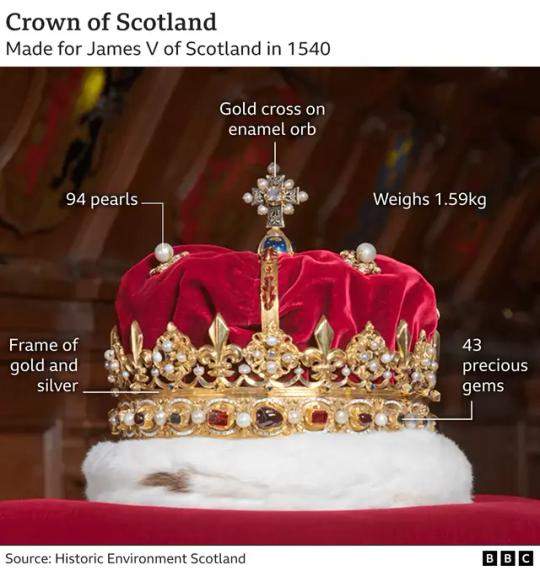
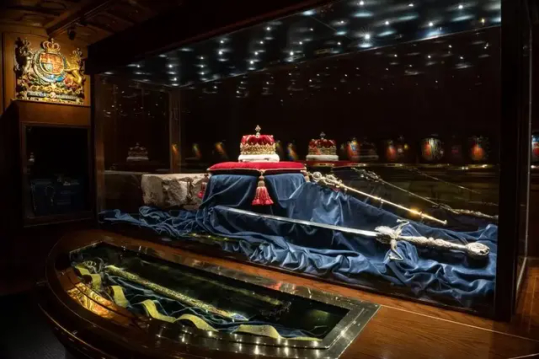
On 26th May 1819, the Honours went on public display in the Crown Room in Edinburgh Castle.
The ‘Honours’, our Crown Jewels, were first used together at the coronation of the nine-month-old Mary, Queen of Scots in 1543, the Crown almost certainly dates from before 1540 when it was remodelled by order of James V. It was last worn at the coronation of Charles II at Scone in 1651, the last time a monarch was crowned in Scotland.
Made of solid silver, the Sceptre is surmounted with three figures supporting a crystal globe, a cut and polished rock crystal, with a Scottish pearl on top. A gift from the Pope, possibly given by Innocent Vlll to James IV in 1494, again it was remodelled by James V who even added his initials to the sceptre, the Stewarts were a vain lot.
The Sword of State was presented to James IV in 1507 by Pope Julius II and has a blade a metre long.
Following the Treaty of Union in 1707, the ancient Honours were not seen for a century. Rumours circulated that the English had removed them to London. However Sir Walter Scott asked for permission to seek them out in in 1818. And as he suspected they were found in a chest hidden away.
They have remained on secure display ever since, except for the duration of World War II.
The Honours have since been joined by other royal regalia and jewels of a personal nature – the Wand (found in the Chest in 1818), the Stewart Jewels (presented by William IV in 1830) and the Lorne Jewels (bequeathed by Princess Louise in 1939) – and by the Stone of Destiny (see separate Statement), which was returned from Westminster Abbey in 1996 after it as stolen by Edward I (Longshanks) Scotland ove700 years before.
Below is a lengthy rundown of the Honours as marked down in history, please note though that the earliest dates are only noted in history some of the original Honours were lost by the English.
574: First reference to a royal sceptre, by Cumméne ‘the White’, seventh abbot of Iona, in connection with the inauguration by St Columba of Aédán mac Gabhráin as king of the Scots of Dál Riata.
1097: King Edgar is depicted on his seal wearing a crown, and holding a sceptre and sword.
1157: David I is depicted in a posthumous charter holding an orb in place of a sceptre.
1182: William I ‘the Lion’ is presented with a golden rose by Pope Lucius II.
1296: Edward I of England strips John I (Balliol) of his crown, sceptre and sword and takes them, together with the Stone of Destiny, to England, where they are subsequently lost or destroyed.
1306: Robert I (Bruce) is enthroned at Scone with a new circlet of gold.
1329: Pope John XXII formally recognises the right of kings of Scots to be formally crowned and anointed, hitherto denied them on account of English opposition.
1331: David II, Robert I’s heir, is formally crowned and anointed at Scone.
1484: Coin evidence (a silver groat) indicates that the crown, hitherto a simple open circlet, has by now become an ‘imperial’ crown (ie, closed with arches).
1486: James III is presented with a golden rose by Pope Innocent IV.
1491: James IV is presented with a golden rose by Pope Innocent VIII.
1494: Tradition has it that the Sceptre was presented to James IV by Pope Alexander VI. However, it is possible that the Sceptre was presented with the golden rose in 1491.
1503: James IV is depicted in the Book of Hours , made to commemorate his marriage, wearing an ‘imperial’ crown. Also, first mention of a crown bonnet.
1507: The Sword of State is presented to James IV by Pope Julius II. A consecrated, or blessed, hat is presented at the same time.
1532: The bonnet is renewed and the crown repaired by Thomas Wood, goldsmith.
1536: The Sceptre is lengthened and embellished for James V by Adam Leys, an Edinburgh goldsmith, perhaps in preparation for his first marriage, to Princess Madeleine de Valois. This enhancement is formally acknowledged when the Crest above the Royal Arms is amended, the Sceptre replacing the Saltire in the lion’s left paw.
1539, the crown is refashioned to its present form for James V by John Mosman, Edinburgh goldsmith. James wears it for the first time at the coronation of his second wife, Mary of Guise, in Holyrood Abbey. The purple velvet bonnet, made by Thomas Arthur, has not survived, but its four delicate ornaments have.
1543: Mary Queen of Scots is crowned in Stirling Castle, the first sovereign to be enthroned with all three Honours. 1
560: Queen Mary receives a golden rose from Pope Pius IV. 1567: James VI is crowned with the Honours in the Kirk of the Holy Rude, Stirling.
1571–73: Substitute Honours are used at sittings of Parliament, because Edinburgh Castle is in the hands of the supporters of the exiled Queen Mary.
1615–16: The Crown Room is created, part of the wholesale remodelling of the Palace in preparation for James VI’s ‘hamecoming’ in 1617. The present Crown Chest is very probably also made at this date.
1633: Charles I is crowned in Holyrood Abbey with the Honours
1638–39: The Honours are taken to Dalkeith Castle for safe-keeping during the conflict between Charles I and those supporting the National Covenant.
1650: The Honours are removed from the castle, possibly to Stirling Castle, for safe-keeping, prior to Oliver Cromwell besieging the castle.
1651: Charles II is crowned with the Honours at Scone. Following the ceremony, the Honours, unable to be brought back to Edinburgh Castle, are taken to mighty Dunnottar Castle, Kincardineshire, seat of the Earl Marischal.
1652–60: The Honours are smuggled out of Dunnottar and buried under the floor of nearby Kinneff Kirk. On Charles II’s return to the throne, the Honours are returned to Edinburgh Castle: all except the Sword belt and Crown cushion.
1687: James VII has the crown bonnet changed from purple to red.
1707: Following the adjourning of Parliament after the passing of the Act of nion.
1790: The Sword Belt is discovered hidden in a wall at Barras, near Dunnottar Castle, by Sir David Ogilvy.
1794: Lieutenant-Governor Major Drummond briefly opens the Crown Room in search of old Parliamentary records but, because he lacks the necessary royal warrant, does not break open the Crown Chest.
1818: Walter Scott and others, with a royal warrant from the Prince Regent, officially break into the Crown Room, break open the Crown Chest and there rediscover the Honours, together with a wand, or baton of office. A second royal warrant appoints the Commissioners for the Keeping of the Regalia (Keeper of the Great Seal, Keeper of the Privy Seal, His Majesty’s Advocate, the Lord Clerk Register and the Lord Justice Clerk). Scott’s friend Adam Ferguson is appointed Keeper of the Regalia, with a ‘grace and favour’ flat above the Crown Room.
1819: The public are invited to inspect the Honours in the Crown Room, on payment of an admission fee.
1822: George IV (the former Prince Regent) formally visits Scotland, and the Honours are taken to the Palace of Holyroodhouse for the duration of his stay.
1830: The Stewart Jewels, bequeathed to George III in 1807 by Prince Henry, Cardinal York, the last Stuart claimant to the throne of Great Britain, are entrusted by William IV into the safe-keeping of the Keeper of the Regalia for display in the Crown Room.
1837: The Turkish Ambassador is denied entry to the Crown Room because he does not have an admission ticket!
1842: The Honours are temporarily removed to an adjacent room so that they may be better viewed by Queen Victoria and Prince Albert.
1848: The present panelling is installed in the Crown Room by the Edinburgh firm of Charles Trotter, cabinetmakers and joiners.
1871: The Honours are redisplayed behind a cage of ornamental bars, for their better security.
1892: The Sword Belt is returned to the Crown Room from Barras Castle, Kincardineshire, by Rev. Samuel Ogilvy Baker, a descendant of Sir David Ogilvy.
1905: The old Crown Cushion is presented to the State by Sir Patrick Keith Murray, who states that it had been retained at Dunnottar by his ancestor, Sir William Keith, 9th Earl Marischal, after the Honours had been smuggled out in 1652
1911: The Sword is taken to St Giles’ Cathedral for the official opening of the Thistle Chapel. Gyp, the Crown Room dog, dies and is buried in the Dog Cemetery below St Margaret’s Chapel.
1939: Princess Louise, Queen Victoria’s fourth daughter, bequeaths the Lorne Jewels, presented to her by Clan Campbell on the occasion of her marriage to the Marquis of Lorne in 1871, to the Scottish nation, and they are added to the display in the Crown Room. Shortly thereafter (1 September), the Crown Jewels are taken down to the basement of the Palace to protect them from aerial bombardment by German planes.
1942: The Honours are secretly taken out of the basement and buried in David’s Tower, where they remain for the duration of WWII.
1953: The Honours are presented to Her Majesty Queen Elizabeth at the National Service of Thanksgiving in St Giles’ Cathedral that follows the Coronation in Westminster Abbey.
1971: The Sword of State is used for the first time at the ceremonial installation of a Knight of the Most Ancient and Most Noble Order of the Thistle, Scotland’s premier Order of Chivalry, held in the Thistle Chapel, in St Giles’ Cathedral.
1980s: The post of Warden of Regalia is abolished. 1
987: The Sword of State is used alone for the final time, in St Giles’ Cathedral for the tercentenary anniversary celebrations of the Order of the Thistle. Thereafter, in view of its parlous condition, its ceremonial role is restricted to National Services of Thanksgiving
1993: Her Majesty Queen Elizabeth formally opens the Honours of the Kingdom exhibition, including the extensively refurbished Crown Room and redisplayed Honours. The present Crown Cushion is made specially for the occasion. The Crown Chest is relocated from the Crown Room to an adjacent exhibition space and displayed alongside one of the original padlocks, broken in 1818.
1999: The Crown is formally taken to the State Opening of the Scottish Parliament, the first in the modern era.
2022; The Crown of Scotland was placed on Elizabeth II's coffin at a service in St Giles' Cathedral.
2023; The Honours of Scotland were presented to King Charles III in a ceremony held in St Giles' Cathedral. The ceremony was formally described as a National Service of Thanksgiving and Dedication to mark the coronation of King Charles III.
39 notes
·
View notes
Text
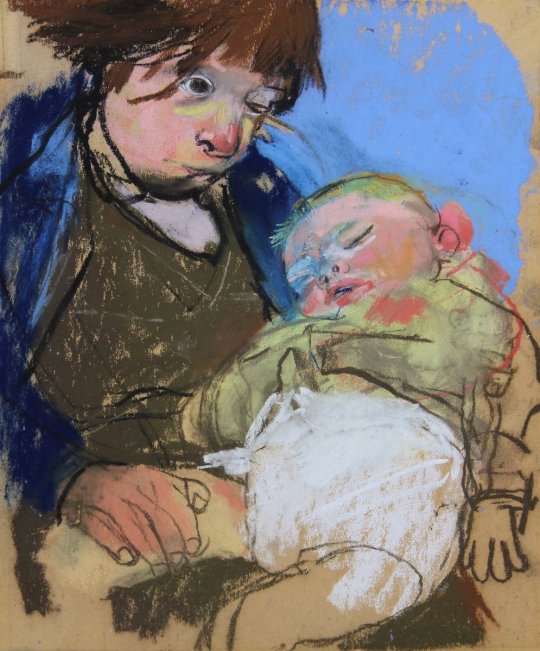
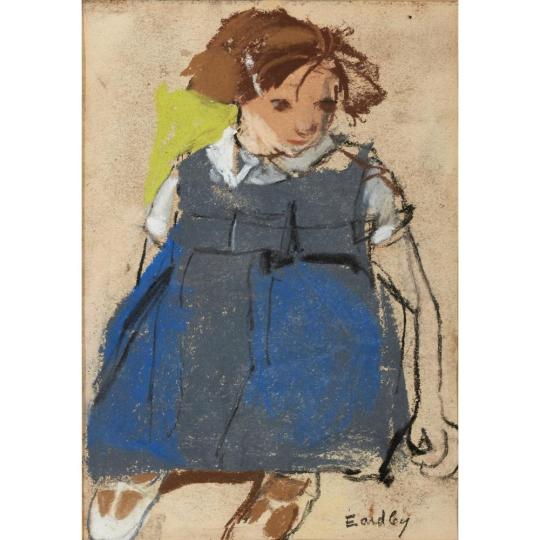
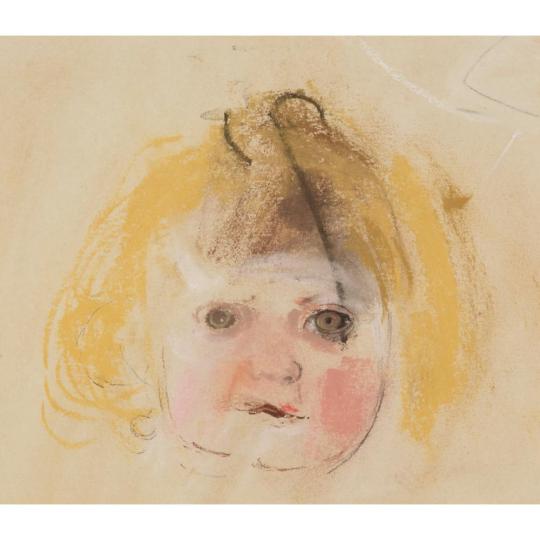
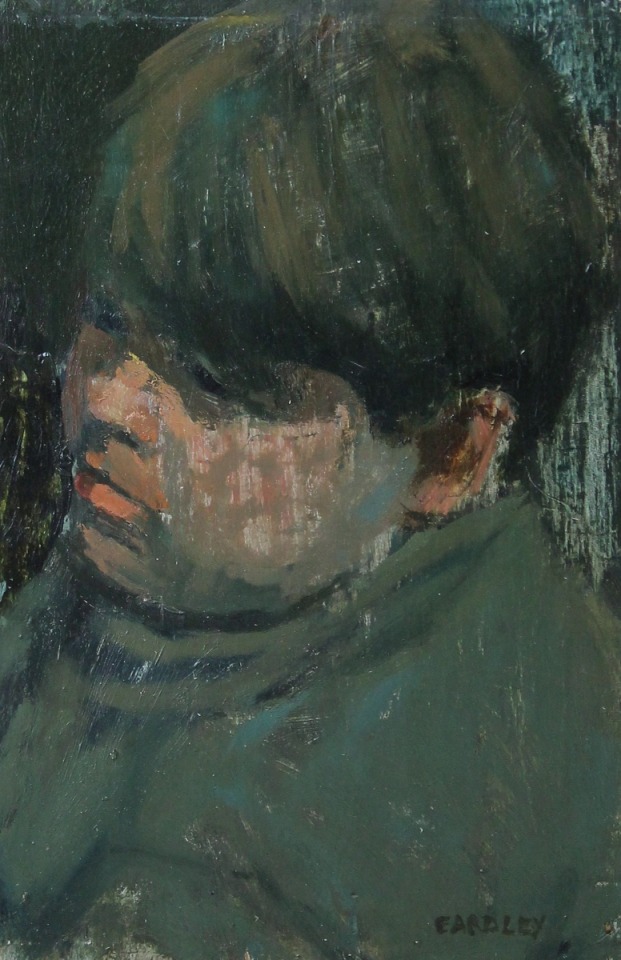
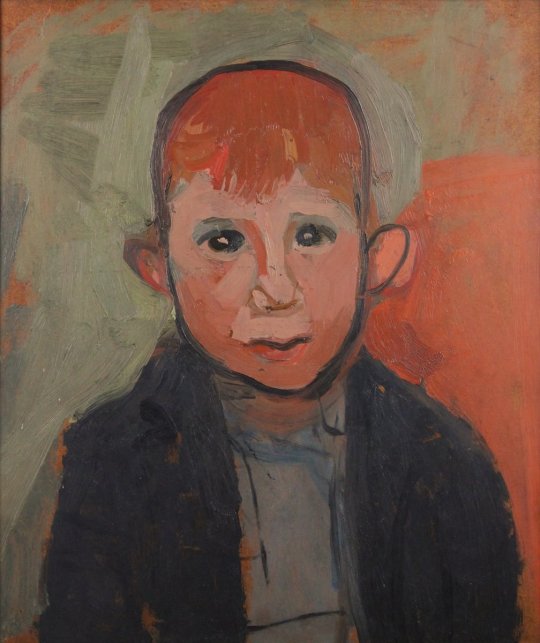
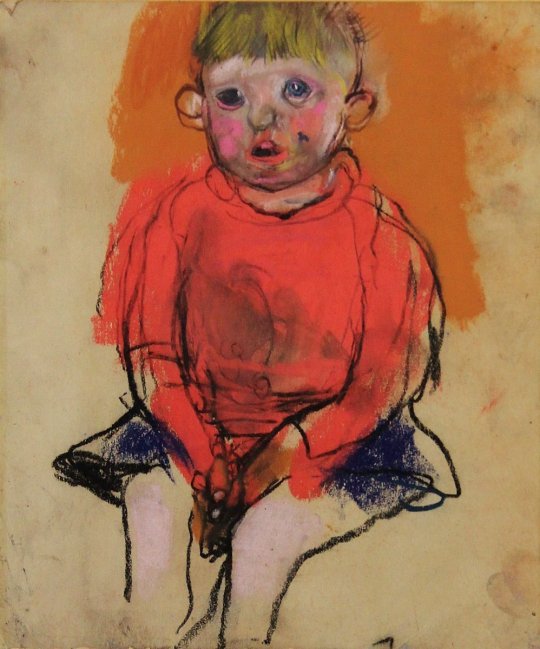
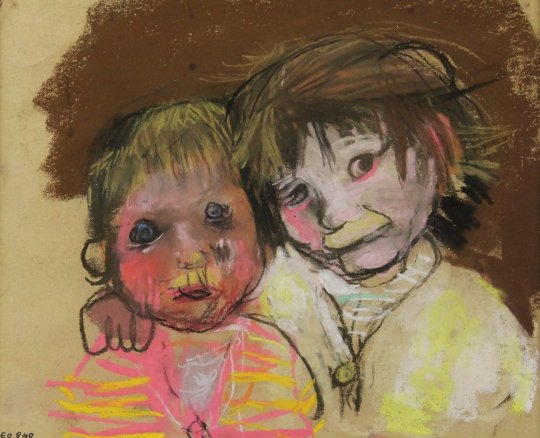


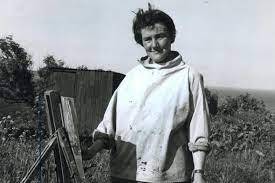
Joan Eardley was born in Sussex in 1921. A tragic childhood, with her father committing suicide when she was just nine years old, she moved with her Mother and sister, Patricia, to Blackheath, London in 1929.
Showing an early aptitude and enthusiasm for art, Joan attended the local art school in Blackheath, but soon won a position at the prestigious Goldsmiths College. Following a family move to Glasgow, Joan secured a place at the Glasgow School of Art in 1940, a move which was to significantly influence the course of her future life and art work. Here she was awarded the Sir James Guthrie prize for Portraiture.
Following spells away from Scotland after graduation, Joan returned and set up home and studio in Glasgow in 1949. Close to the tenements of Townhead, Joan began to paint the children from the “slum areas”. These are regarded as amongst the most powerful and prized of her life’s work; depicting the deprivation and yet humanity within the faces of the children.
In the early 1950s, Joan purchased a cottage at Catterline, a small coastal village close to Stonehaven. Here she began to experiment with both land and sea-scapes, working with paint to depict her surrounding world with a life and energy few had managed before.
Joan was made and associate member of the Royal Scottish Academy in 1955, and voted a full member in 1963. Sadly, it was in that same year Joan lost her battle with cancer and died, aged just 42.
45 notes
·
View notes
Text

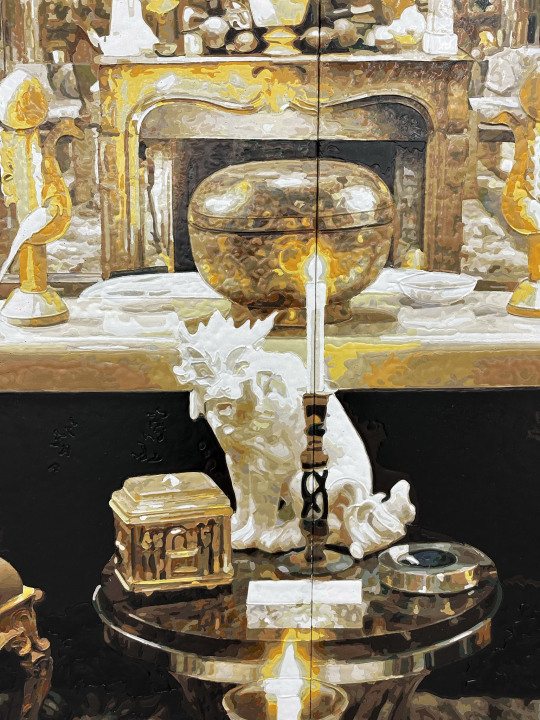
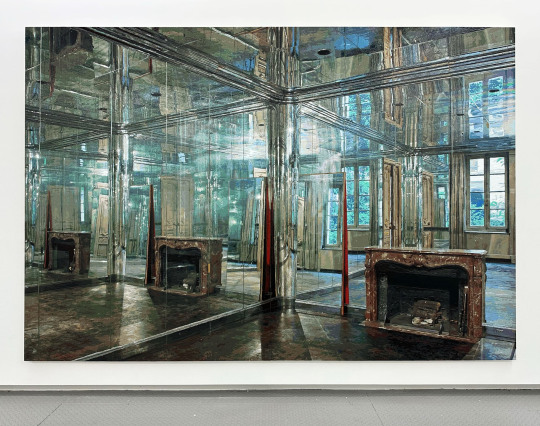
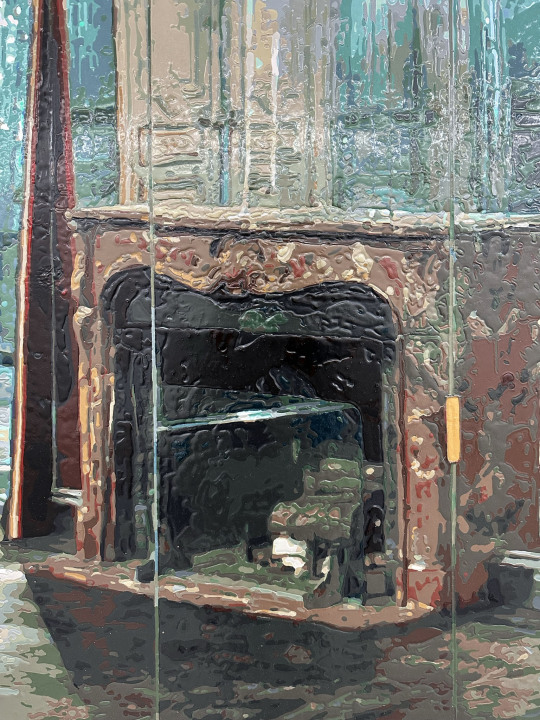
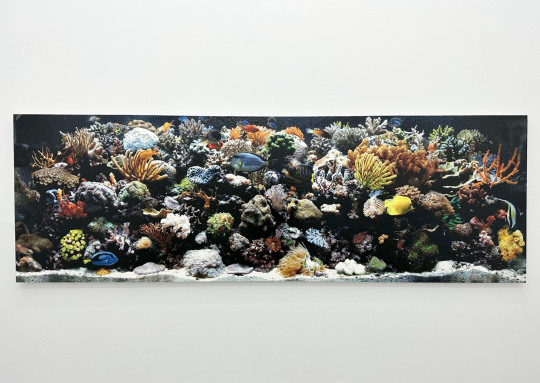

Currently at Arsenal Contemporary are Dorian FitzGerald’s paintings for his exhibition Fitzcarraldo. The images above are a few of the larger paintings from the show. The works initially look like photographs, but on closer inspection you can see more of the process involved in their creation.
Below is a section from the press release discussing FitzGerald’s work and the paintings pictured above. For more on the other works shown, including some of the smaller paintings, head to the gallery's website.
FitzGerald has spent the last two decades meticulously crafting a compelling, often monumental body of works, several of which have taken years to finish. His various lines of inquiry revolve around a central tenet: that the excesses, the follies, the deceptions and indulgences, the grand edifices, the opulence, the waste and plunder, the vanities, the subterfuges and the chummy pacts of the wealthy and the powerful, are all fodder for scrutiny. His subjects have ranged from the outdoor stage at the secretive Bohemian Grove during a production of Faust, a fake crown of costume jewelry made by the British to impress the King of Adra and help them facilitate their slave trade, to the staggering array of sunglasses collected by Elton John, to a vast aquarium stocked with black market fish. In this regard, FitzGerald has been compared to a contemporary court painter, albeit one who fully understands the paradox of using ostensibly beautiful works of art to deliver barbed comment on the very subjects he has so painstakingly rendered. FitzGerald’s large paintings are constructed with acrylic paint (and occasionally caulking) in a slow, precise method that the artist has refined in his studio over several years. The pre-process involves researching imagery, preparing it with custom software, making a large-scale acetate transfer onto canvas and then building up the paint slowly in a manner that resembles a kind of pointillism filtered through vector graphics. Both colour theory and the physical properties of paint, such as drying times and viscosity, are brought to bear in the setting of the final image. The infinite patience and granular attention to detail suggest a kinship with Tibetan sand painting. While the latter, once finished, is soon wiped away to drive home the impermanence of all things, FitzGerald’s works tend to hold a mirror up to that innately human wish to be exalted and remembered in the minds of others before the scythe comes down, as it inevitably does for queen, shepherd (and artist) alike.
Anchoring the exhibition is a pair of monumental paintings, both depicting a room in a Parisian apartment. Salon, Apartment of Valerian Rybar and Jean-François Daigre, Rue du Bac, Paris (2015) is the furnished version. Daigre and Rybar’s New York- and Paris-based firm Valerian Rybar & Daigre Design Corporation was renowned for providing the most lavish interior design and decorating for society doyennes from Miami Beach to Marakkesh in the 1970s and 1980s. It was closed following Rybar’s death in 1992. Their clients included Guy and Marie-Helene de Rothschild, Nicholas and Genevieve DuPont, Antenor and Beatriz Patino, Samuel and Mitzi Newhouse, Pierre and Sao Schlumberger, Sir James Goldsmith, Christina Onassis and Stavros Niarchos. They employed a host of artisans all over the world who did anything from paint Medieval tapestries on blank walls to create mother-of-pearl panels for a bathroom. They designed much of the furniture and rugs and were meticulous about the choice of fabrics, using opulent materials like satins trimmed with gold thread. The related painting, four years in the making, acts as a kind of coda. Salon, Rue de Bac, Paris (2022), depicts the same room after Rybar’s death, now an empty hall of mirrors en route to being dismantled. The searing band of red in the centre of the painting, glowing behind a door already off its hinges, is a peek into the molten bedroom that they had once kitted out like a Roman general’s tent.
Aquarium (Taboo) (2018), at 128” long and 40” high, was two years in the making. The painting shows a vibrant aquatic scene, with dazzling exotic fish and a mesmerizing array of coral. But the fish are black market, the coral has been pilfered, the 240-gallon tank is overcrowded with 53 specimens and the entire enterprise is kept alive by a complex system that is wholly unnatural and requires constant vigilance to prevent collapse. Of course, wild fish bound for the aquarium market must be caught alive and thus there exists an unsavoury network of divers who prowl the world’s reefs to find the most exotic and rare, often using cyanide spray to stun them (or inadvertently kill them if too much is used). The cyanide, when it settles on coral, soon kills that too.
This exhibition closes on 5/20/23.
#Dorian FitzGerald#arsenal contemporary nyc#arsenal contemporary#nyc art shows#art#painting#art show#lifestyles of the rich and famous#opulence#wealth#valerian rybar#daigre design#rybar and daigre design
2 notes
·
View notes
Video
youtube
Clip: Sir James Goldsmith Presciently Explaining Globalization in 1994
0 notes
Text
The private retreat for Sir James Goldsmith and his family, more than 30,000 acre nature reserve.
0 notes
Text
A Scientist’s Testimony: Sir James Young Simpson, Pioneer Of Anaesthetics
When I was a boy at school I saw a sight that I can never forget – a man tied to a cart and dragged before the people’s eyes through the streets of my native town, his back torn and bleeding from the lash. It was a shameful punishment. For many offences? No; for one offence. Did any of the townsfolk offer to share the lashes with him? No; he who committed the offence bore the penalty alone. It was the penalty of a changing human law, for this was the last instance of its affliction.
When I was a student at the University I saw another sight that I can never forget – a man brought out to die, His arms were pinioned, his face was already pale as death while thousands of eager eyes gazed on him as he came up from the gaol.
Did anyone ask to die in his place? Did any friend come and loose the rope and say: ‘Put it around my neck and let me die instead’? No; he underwent the sentence of the law. For many offences? No; for one offence. He had stolen a parcel from a stage coach. He had broken the law at one point and must now die for it. It was the penalty of a changing human law in this case too; it was also the last instance of capital punishment for that offence.
I saw another sight – it matters not when – myself a sinner standing on the brink of ruin, deserving nought but hell. For one sin? No; for many sins committed against the unchanging laws of God. But again I looked and saw JESUS, my substitute, scourged in my stead and dying on the cross for me. I looked and cried and was forgiven. And it seems to be my duty to tell you of that Saviour, to see if you will not also look and live:
Bound upon th’ accursed tree, Faint and bleeding, who is he? By the eyes so pale and dim, Streaming blood and writhing limb, By the lash with scourges torn, By the crown of twisted thorn, By the side so deeply pierc’d, By the baffled burning thirst, By the drooping death-dew’d brow, Son of Man, ‘tis thou! ‘tis thou!
Bound upon th’accursed tree, Dread and awful, who is he? By the sun at noon-day pale, Shiv’ring rocks and rending veil, By earth trembling at his doom, By the saints who burst their tomb, By Eden promis’d ere he died To the felon at his side, Lord, our suppliant knees we bow; Son of God, ‘tis thou! ‘tis thou!
How simple it all becomes when the Holy Spirit opens the eyes! A friend from Paris told me of an English groom there, a careless old man who during a severe illness had been made to feel that he was a sinner. He dared not die as he was. The clergyman for whom he sent grew tired of visiting him, having often told him the way of salvation.
One Sabbath afternoon, however, the groom’s daughter waited in the vestry after church, saying: ‘You must come once more, sir; I cannot see my father again without you.’ ‘I can tell him nothing new,’ said the clergyman, ‘but I may take the sermon I have been preaching and read it to him.’
The dying man lay as before in anguish thinking of his sins and whither they must carry him. ‘My friend, I have come to read you the sermon that I have just preached. First, let me tell you the text: ‘He was wounded for our transgressions, he was bruised for our iniquities; the chastisement of our peace was upon him and with his stripes we are healed’ (Isaiah 53 verse 5). Now I will read…’
‘Stop! said the dying man, ‘I have it! I have it! Read no more. He was wounded for my transgressions. That is enough!’ Soon afterwards he died rejoicing in Jesus.
When I heard the story I remembered Archimedes running through the streets of Syracuse straight from the bath where he had discovered in bathing the secret of testing whether King Hiero’s crown had, or had not, been alloyed by the goldsmith in making it – and as he ran he cried: Eureka! Eureka! (I have found it! I have found it!)
Poor philosopher! You had merely found out a new principle in science. Happy groom! You had found in JESUS Christ a crown of glory that fadeth not away.’
~ Sir James Young Simpson.’
1 note
·
View note
Text
"Gossip columnists are diseases, like 'flu. Everyone is subject to them."
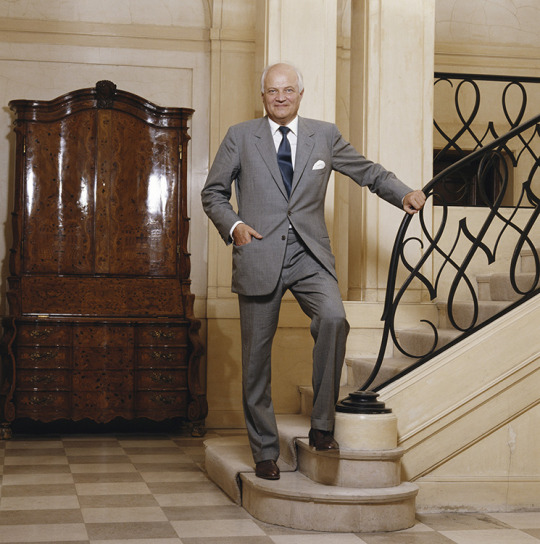
Sir James Michael Goldsmith was a French-British financier, tycoon and politician.
Born: 26 February 1933, Paris, France
Died: 18 July 1997, Benahavís, Spain
#James Goldsmith#French-British financier#Tycoon#politics#uk politics#Referendum Party#Eurosceptic#UKIP#Reform party#brexit#EU#europe#Europen union#quoteoftheday#today on tumblr
1 note
·
View note
Photo





THE GOLDSMITH/BIRLEY FAMILY British British aristocratic and political family. https://en.wikipedia.org/wiki/Goldschmidt_family
SIR JAMES GOLDSMITH (1933-1997).Anglo-French businessman,politician.https://en.wikipedia.org/wiki/James_Goldsmith
His (3rd) Wife
LADY ANNABEL GOLDSMITH (1934-).British socialite who helped establish her first husband,Mark Birley’s,famous exclusive and wealthy nightclub,Annabel’s,in Mayfair,London. (Sir James was her 2nd husband). https://en.wikipedia.org/wiki/Lady_Annabel_Goldsmith
Their children:
ZAC GOLDSMITH (1975-).British Conservative MP (Richmond Park). https://en.wikipedia.org/wiki/Zac_Goldsmith
JEMIMA KHAN (nee Goldsmith. 1974-). British television documentary producer,former associate editor of politicial magazine The New Statesman,& former wife of Imran Khan,former Pakistan cricketer & current Prime Minister of Pakistan.https://en.wikipedia.org/wiki/Jemima_Goldsmith
BEN GOLDSMITH (1980-).British financier & environmentalist.https://en.wikipedia.org/wiki/Ben_Goldsmith
With Lady Annabel & Mark Birley’s children
ROBIN BIRLEY (1958-).British Political donor,environmentalist & Vintner.https://en.wikipedia.org/wiki/Robin_Birley_(businessman)
INDIA JANE BIRLEY (1961-).British artist,businesswoman,co owner/manager of Annabel’s nightclub.https://en.wikipedia.org/wiki/India_Jane_Birley
RUPERT BIRLEY (19?-1997). British businessman,disappeared in Togo,Africa c1997
----
LIVED AT: ORMELEY LODGE,Ham Gate Avenue,Petersham TW10 5HB https://goo.gl/maps/Cx8GxTNiULL2
Residence: Mid 1970′s to present.(Bought by Sir James Goldsmith). LADY ANNABEL STILLL RESIDES HERE.
Plaque.?: No
#Sir James Goldsmith#Lady Annabel Goldsmith#Zac Goldsmith#Jemima Khan#British Aristocrats#British Politicians#British Businessmen#British Businesswomen#Political Richmond#Business Richmond#Petersham Richmond Upon Thames#Ormeley Lodge#Richmond Upon Thames#Famous Residents of Richmond upon Thames
0 notes
Text
for my purposes, the referenced texts E.M. Forster made in his book, The Aspects of the Novel.
William George Clark. Gazpacho: Or Summer Months in Spain. —. Peloponnesus: Notes of Study and Travel. —. The Works of William Shakespeare - Cambridge Edition. —. The Present Dangers of the Church of England. John Bunyan. The Pilgrim's Progress. Walter Pater. Marius the Epicurean. Edward John Trelawny. Adventures of a Younger Son. Daniel Defoe. A Journal of the Plague Year. —. Robinson Crusoe. —. Moll Flanders. Max Beerbohm. Zuleika Dobson. Samuel Johnson. The History of Rasselas, Prince of Abissinia. James Joyce. Ulysses. —. A Portrait of the Artist as a Young Man. William Henry Hudson. Green Mansions. Herman Melville. Moby Dick. —. "Billy Budd". Elizabeth Gaskell. Cranford (followed by My Lady Ludlow, and Mr. Harrison's Confessions). Charlotte Brontë. Jane Eyre. —. Shirley. —. Villette. Sir Walter Scott. The Heart of Midlothian (part of the Waverley Novels). —. The Antiquary (part of the Waverley Novels). —. The Bride of Lammermoor (part of the Waverley Novels). George Meredith. The Ordeal of Richard Feverel. —. The Egoist. —. Evan Harrington. —. The Adventures of Harry Richmond. —. Beauchamp's Career. Leo Tolstoy. War and Peace. Fyodor Dostoevsky. The Brothers Karamazov. William Shakespeare. King Lear. Henry Fielding. The History of Tom Jones, a Foundling. —. Joseph Andrews. Henry De Vere Stacpoole. The Blue Lagoon (part of a trilogy; followed by The Garden of God and The Gates of Morning). Clayton Meeker Hamilton. Materials and Methods of Fiction. George Eliot. The Mill on the Floss. —. Adam Bede. Robert Louis Stevenson. The Master of Ballantrae. Edward Bulwer-Lytton. The Last Days of Pompeii. Charles Dickens. Great Expectations. —. Our Mutual Friend. —. Bleak House. Laurence Stern. The Life and Opinions of Tristram Shandy, Gentleman. Virginia Woolf. To the Lighthouse. T. S. Eliot. The Sacred Wood.
One Thousand and One Nights. Emily Brontë. Wuthering Heights. Charles Percy Sanger. The Structure of Wuthering Heights. Johan David Wyss. The Swiss Family Robinson. D. H. Lawrence. Women in Love. Arnold Bennett. The Old Wives' Tale. Anthony Trollope. The Last Chronicle of Barset. Jane Austen. Emma. —. Mansfield Park. —. Persuasion. H. G. Wells. Tono-Bungay. —. Boon. Gustave Flaubert. Madame Bovary. Percy Lubbock. The Craft of Fiction. —. Roman Pictures. André Gide. The Counterfeiters. Homer. Odyssey. Thomas Hardy. The Return of the Native. —. The Dynasts. —. Jude the Obscure. Anton Chekhov. The Cherry Orchard. Oliver Goldsmith. The Vicar of Wakefield. David Garnett. Lady Into Fox. Alexander Pope. The Rape of the Lock. Norman Matson. Flecker's Magic. Samuel Richardson. Pamela; or, Virtue Rewarded. Anatole France. Thaïs. Henry James. The Ambassadors. —. The Spoils of Poynton. —. Portrait of a Lady. —. What Maisie Knew. —. The Wings of the Dove. Jean Racine. Plays.
I. A. Richards.
8 notes
·
View notes
Text
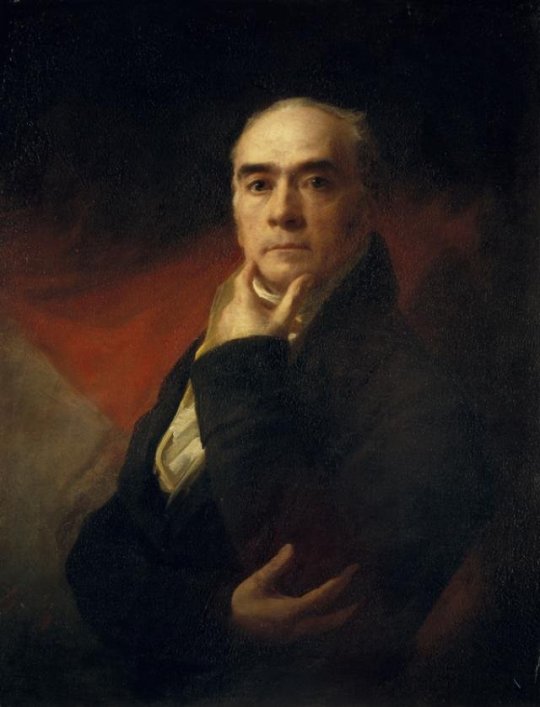
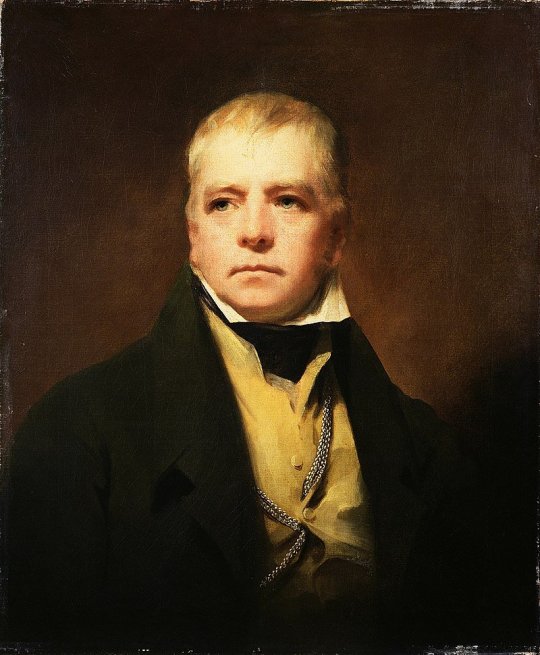
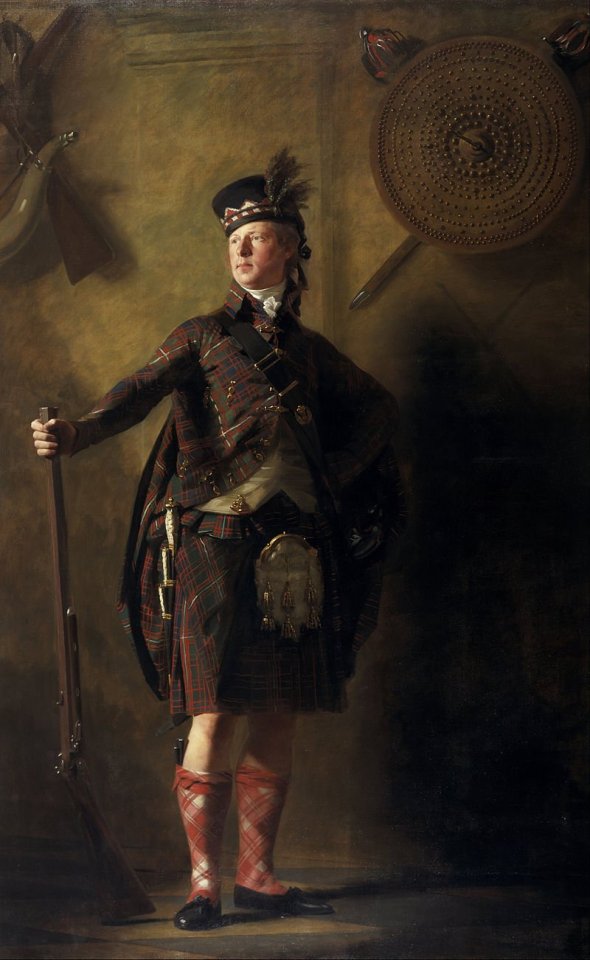
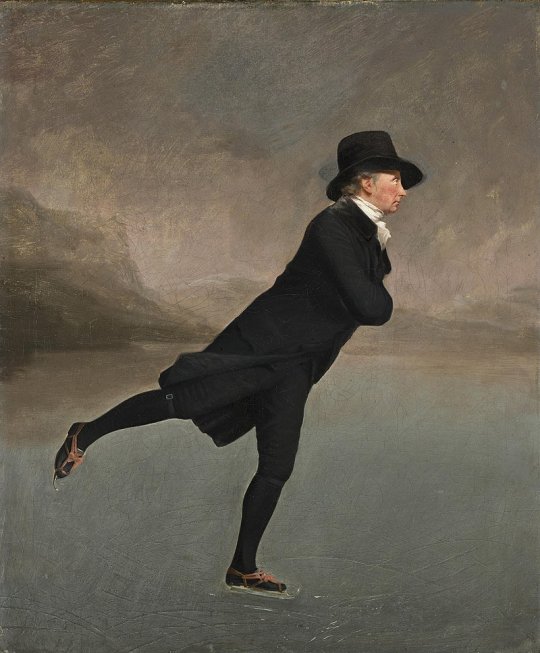
On July 8th 1823, the renowned artist, Sir Henry Raeburn, died.
Sir Henry Raeburn is perhaps the best known of all Scottish painters. He was almost exclusively a portraitist and his career was wholly in Scotland, mainly in Edinburgh. His small full-length portrait of the Rev Robert Walker Skating on Duddingston Loch, of about 1784 is probably his most famous work.
Henry Raeburn was born in Edinburgh, the son of a successful businessman who prepared yarn for the wool trade. However, both of Raeburn’s parents died in the early 1760s, leaving the young Raeburn in the care of his brother William, 12 years his senior. William took over the family yarn business and his younger brother was enrolled at George Heriot’s Hospital in 1765, then a school for the education of orphaned children of tradesmen.
During his schooling, Raeburn demonstrated particular aptitude for manual craftsmanship and he became apprenticed to a goldsmith, James Gilliland in 1772. At some point in his time in Gilliland’s jeweller’s workshop, Raeburn started painting portrait miniatures. Following his apprenticeship, Raeburn embarked upon a career as a portraitist while also attending drawing classes involving drawing from the Antique and from a draped model.
In the late 1770s, Raeburn married Ann Leslie Edgar, a wealthy widow who brought property and two daughters to the marriage. After the birth of two sons in 1781 and 1783 respectively, Raeburn began to plan for an extended stay in Rome, which he believed would provide artistic development and commercial success.
Arriving in Rome in late 1784, Raeburn made contact with fellow Scot James Byres, who provided guidance for Britons travelling on the Grand Tour. Byres also provided Raeburn with patrons and the chance to meet notable artists, such as Pompeo Batoni.
On his return to Scotland in 1786, Raeburn began producing impressive portraits for members of the Edinburgh elite, quickly establishing his reputation as the pre-eminent Scottish portraitist. During the 1790s, Raeburn developed his own unique style characterised by strong lighting from behind the sitter and dispersing across the canvas. He was in such high demand as a portraitist that he outgrew his studio in George Street, the fashionable and burgeoning central thoroughfare of Edinburgh’s New Town and, around 1800, moved to a grand house nearby with reception areas, a framer’s workshop and a studio that took up the entire first floor. In these new premises Raeburn produced a series of full-length portraits of Highland chiefs and lairds in Scottish military dress which drew particular attention when exhibited in London.
From 1805, Raeburn was involved in a trading company called Henry Raeburn & Co., that operated from the port of Leith, trading mainly with London. He also became a director of the Caledonian Insurance Company in 1806, but his finances were far from secure. At the start of 1808, Raeburn was declared bankrupt. The cause of his financial ruin is not entirely known but by mid-1808 he had £36,000 in claims against him. Raeburn vowed to spend the rest of his life repaying these debts and untangling his financial difficulties, which were intertwined with family, as his son and step-son-in-law were partners in his trading firm.
In 1810, Raeburn sought to resolve his financial difficulties by moving to London. His fellow painter and countryman David Wilkie had relocated there years earlier successfully, but unfortunately, Raeburn’s attempt to find riches in the London art scene did not work and he returned to Edinburgh later the same year.
Despite his lack of success in London, Raeburn was elected an Associate of the Royal Academy in 1812 and became a full Member in 1815. An embarrassing miscommunication meant that the self-portrait Raeburn had gone to great lengths to prepare as his Diploma work, was refused by the Royal Academy due to their embargo on accepting self-portraits as Diploma works. Raeburn was sorely disappointed, and instead submitted a portrait of his grandson Henry Raeburn Inglis, Boy with a Rabbit. There is evidence in his correspondence that Raeburn felt frustrated at his isolation from the London art establishment, that he could not find success there as he did in his native Edinburgh.
After 1808, Raeburn’s paintings suffered from his prolific output and urgency to produce work to repay his creditors. Many portraits from this time appear hastily finished or lack depth. However, he also managed to produce some of his most sensitive and affecting paintings, and he was particularly adept at painting children.
In the final years of his life, Raeburn was lauded with honours and accolades, becoming a member of the American Academy of Fine Arts in 1819, a fellow of the Royal Society of Edinburgh in 1820, being knighted in 1822 and appointed as Painter and Limner to King George IV in 1823.
Raeburn died unexpectedly on this day in July 1823, following a visit to Fife where he probably contracted a fever.
His posthumous reputation grew with a number of exhibitions in the 19th century, and his paintings were highly sought-after as part of the early 20th-century American craze for British art; Raeburn’s works feature in several public museums and private collectors in the US and around the world today.
Pics are his self portrait, Sir Walter Scott, Alexander Ranaldson MacDonell of Glengarry and The Skating Minister
7 notes
·
View notes
Text
attended to his letters; a course of reducing exercises
or did you hear commentaries [ ] over the radio? I don’t have the time to do it. You don’t have time to do it. 1 and that, of course, you don’t have time to was taught the game 2 increasing the feed for / my dope, but you don’t have time 3 You don’t have time to investigate them fully yourself? No 4 It was hard work? — Yes, sir. You have to be fast and do the best you can. You don’t have time 5 for nearly everything; you don’t have time 6 You don’t have time to bother about your neighbors, and you don’t 7 enjoy our own com . pany , as we never have any chance to see friends around home, for you don’t have time after and before 8 And in some cases wastefully? — Not wastefully. Does not one involve the other? — I don’t see it in that light. A man applies for relief. You don’t have time to see that man. 9 you don’t have time to spend one hour in thinking every day to see your business in a bigger, better, and cleaner way than it is today. [ ] desk covered with papers, unfinished business, no time to see 10 the “ticket” for large swamps. You don’t have time 11 You see, when you’re on the news end of a thing like this you don’t have time to get worked up. 12 “Well,” she said, “I suppose you are so busy at the office you don’t have time. 13 you are so terribly busy that I suppose you don’t have time to feel lonesome. Why can’t girls do something like that, too? 14 “How did you like it down there?” he asked. “Well” — she paused thoughtfully — “down there you can keep busy. There’s something to do all the time; you can keep so occupied that you don’t have time to stop and think and feel.” 15 you don’t have time to think of danger” But one foggy morning not long after... 16 today. always say you don’t have time to read. ward, like a girl 17 By the time he had days. When you’re busy you don’t have time to attended to his letters. 18 a course of reducing exercises, you don’t have time to think of that. I don’t believe I’m abnormal, perhaps I am, but 19 Well, I use two formulas; saying you “don’t have time” is part of the world of citation. Saying you “have time” is part of the world of translation. I think that the questioning typical of translation has always been absent in the plastic arts. 20
sources ( “you don’t have time,” all but two pre-1923 )
1 ex reporters’ transcript, April 20, 1959, The People of the State of California, Plaintiff, vs. Louis Estrada Moya, et al., Defendent, being part of the Transcript of Record, Supreme Court of the United States, October Term, 1960, No. 186, Luis Estrada Moya, Petitioner, vs. California on write of certiori to the Supreme Court of the State of California (petition filed June 9, 1960; granted June 27, 1960) : 200 aside — Google misdated this 1832; 1960 was outside of my search range. A well-known case (I was too young at the time to know it). Some sources : ◾ “A mother-in-law’s murder for hire scheme results in death penalty for all three participants” at vcdistrictattorney, in which this : “What made the case unique? The hired killers testified against Mrs. Duncan without commitment [that] the District Attorney would not seek the death penalty in exchange for their testimony... In fact, all three received the death penalty and were executed. Of course, today’s appellate courts would likely reverse a case in which a defense attorney failed to seek sentencing concessions in exchange for testimony.” ◾ Arlene Martinez, “Love, scandal and murder: Ventura County case drew national attention,” VC Star (June 29, 2013) ◾ Alice de Sturler review of Jim Barrett his definitive Ma Duncan at Defrosting Cold Cases (October 17, 2020) ◾ Cecelia Rasmussen, “A Mother’s Love Was the Death of Her Daughter-in-Law,” Los Angeles Times (January 20, 2002; paywall) ◾ Joan Renner, “Dead Woman Walking: Elizabeth Ann ‘Ma’ Duncan,” parts 1-4 (2013) at Deranged LA Crimes (True 20th Century tales of murder, mayhem, political corruption, and celebrity scandal) and, finally, ◾ wikipedia 2 OCR cross-column misread, at Annie Eliot, “John Emerson Gaines’s Love Affairs,” The Manhattan 2:5 (November 1883) : 467-475 (468) snippet view only, opens to hathitrust. Annie Eliot Trumbull (1857–1949), author of novels, short stories, and plays; associated with Hartford, Connecticut’s “Golden Age”. wikipedia 3 OCR cross-column misread at H. E. Browing on “Pig Tails,” at The Swine World (Google titles it Poland China World) 5:2 (September 1917) : 11 4 ex Statement of William E. Johnson, chief special officer, United States Indian Affairs, before Committee on Indian Affairs, re: Senate Resolution No. 263 (Washington, 1910) : 367-400 (392) an intense exchange, on sale of alcohol on reservations. William E. “Pussyfoot” Johnson (1862-1945) was an energetic and resourceful prohibitionist and law enforcement officer. (wikipedia) 5 here, Julius Baum, examined by J. R. Lamar (January 29, 1896), in Contested Election Case of Thomas E. Watson Vs. J.C.C. Black, from the Tenth Congressional District of the State of Georgia, and published in/by the U.S. Congress, Committee on Elections (Washington, 1896) : 535 aside — an episode in the dismantling of Reconstruction institutions and Black suffrage. ◾ Thomas E(dward). Watson (1856-1922) (wikipedia). ◾ Watson is discussed in Jo Ann Whatley, her remarkable MA thesis Pike County Blacks : the spirit of populist revolt and White tolerance (1891-1896) as depicted in the Pike County Journal and other related sources (Atlanta University, 1984), available here ◾ Watson was succeeded by James C(onquest). C(ross). Black (1842-1928) (wikipedia). “Black was declared the winner of the election but Watson charged that the vote was fraudulent. Black agreed to resign his seat just after the opening of the 54th Congress so that a new election could be held. In the October 1895 special election, Black prevailed over Watson again, and thus took his seat back to fill the vacancy caused by his own resignation.” J.C. C. Black entry, at Biographical Directory of the United States Congress 6 ex Investigation of Hazing at U. S. Military Academy, being “Testimony taken by the Select Committee of the House of Representatives appointed to investigate and report on the alleged hazing and resulting death of Oscar L. Booz, late a cadet at the Military Academy, and upon the subject of the practice of hazing at the said academy.” (1901) : 776 7 another contested election, here Mrs. Louise Roller under cross-examination by Mr. Goldsmith, in Scholl, Charles L. Vs. Bell, Henry A. Jefferson Circuit Court (Louisville, Kentucky), Chancery Branch: First Division, Chas. L. Scholl, Plaintiff Vs. Henry A. Bell, Defendant. No. 41519. / Second Division, Arthur Peter, Plaintiff Vs. Chas. A. Wilson, Defendant, No. 41524. : “Contested election cases heard together,” Transcript of Record, Volume 8 (10 volumes in 9) : 39 (snippet only, but in full at hathitrust) 8 ex report from Washington Division (by Cert. 9730), 23:5 (May 1906) [number/month uncertain, could be June] : 712 (opens to hathitrust; found via google snippet view) 9 ex the “Poplar Inquiry,” here an examination of Mr. P. G. Miles, Relieving Officer, in Transcript of Shorthand Notes taken at the Public Inquiry held by J. S. Davy, C.B., Chief General Inspector of the Local Government Board, “into the general conditions of the Poplar Union, its pauperism, and the admnistration of the guardians and their officers.” Presented to both Houses of Parliament... (London, 1906) : 141 On the Poplar workhouse, see workhouses.org.uk (scroll down (near bottom) to “The Poplar Union Scandal and Inquiry”). ◾ Poplar is a district in East London (wikipedia) 10 ex E. Elmo Martin (Cleveland, Ohio), “How to hand the day’s work,” in National Lime Association Proceedings (Twentieth Annual Convention, Cleveland, Ohio; June 13-16, 1922) : 68-76 (73) (snippet view; full view at hathitrust) 11 ex H. Stimmons (Stark Co., Ohio), “More about coon hounds,” Hunter-trader-trapper 25:3 (December 1912) : 87-89 (88) (snippet view at Google, but full view at hathitrust, NW second paragraph) 12 ex Wayland Wells Williams (“author and artist,” 1888-1945), The Whirligig of Time (Frederick A. Stokes, 1916) : 335 Wayland Wells Williams papers at Yale YCAL MSS 551 13 ex T.I.M., “Dimpleton Stays at Home : A Story with a Real Moral,” in Life (July 25, 1907) : 155-158 (156) 14 snippet view only, at The Cactus (Austin, Texas; 1908) : 275 A journal “published by and for the students of the University of Texas”; 1907 and 1909 (but not 1908 alas) at hathitrust. 15 “down there” being Chicago, ex Henry Oyen (1883-1921), chapter 36 of “Big Flat,” in The Country Gentleman 84: (March 8, 1919) : 20, 22, 57-59 The novel was published in 1919, same passage at p 204 (NYPL copy) ◾ Haven't located much information about Oyen; his published work is listed at his Online Books page 16 Homer Randall. Army Boys in the French Trenches Or, Hand to Hand Fighting with the Enemy (New York: George Sully & Company, 1918) : 199 Six “Army Boys” titles were produced by the Stratemeyer Syndicate 1918-1920, all under the pseudonym Homer Randall : Army Boys in France, Army Boys in the French Trenches, Army Boys on the Firing Line, Army Boys in the Big Drive, Army Boys Marching into Germany, and Army Boys on German Soil (stratemeyer.org) ◾ The Stratemeyer Syndicate records (1832-1984; bulk 1905-1984) are at NYPL ◾ See also Stratemeyer pseudonyms and series books : an annotated checklist of Stratemeyer and Stratemeyer Syndicate publications / compiled and edited by Deidre Johnson (1982); Deidre Johnson, Edward Stratemeyer and the Stratemeyer Syndicate (Twayne Publishers, 1993); and wikipedia 17 OCR cross-column misread at Harriet Winton Davis, “With the Children : Don’s Knitting,” in The Congregationalist and Advance (August 29, 1918) : 241 Other (not this) issues at hathitrust 18 OCR cross-column misread (extended here), ex H. D. Morgan, Ph. C., “The Kid,” in the section Original and Selected : From the best writers, and the leading drug, medical, chemical and scientific publications of the world, in Practical Druggist and Pharmaceutical Review of Reviews (November 1908) : 529-534 19 Frank R. Adams (1883-1963), “The Heart Pirate,” (illustrations by Charles D. Mitchell), in The Cosmopolitan 72:3 (March 1922) : 43-48, 117-118 (44) — snippet view, but opens at hathitrust More — “... yell for a diet and start doing a course of reducing exercises, you don’t have time to think of that. I don’t believe I’m abnormal, perhaps I am, but just since this afternoon I have come to the conclusion that if you want to put down crime you’ve got to suppress more than just alcohol — you’ve got to suppress the modern flapper. They’re so damnably desirable...” (It gets worse...). See wikipedia; author’s papers at Oregon 20 ex Giuseppe Caccavale : in giardino, a buon fresco (content by Laura Cherubini, Giuseppe Caccavale, Chiara Bertola and Claudia Gian Ferrari; Charta, 2009) : 77

Needed another line, and thought Samuel Beckett might provide. Search yielded no Beckett, but the above passage, fitting in its way and no more nor less ambiguous than anything else here. something recent — Giuseppe Caccavale « Projet Paul Celan », Residence Concordia, Parigi gennaio-ottobre 2020; testo e foto dell’artista. (1 February 2021)
method
A friend reminded me, recently, that I don’t have time (for what is irrelevant here). Have been ruminating on (avoiding the consequences of) this, since. And thinking too about the place dimension of time, as discussed by Veronica O’Keane in her The Rag and Bone Shop : How we make memories and memories make us (2021) — “One’s sense of time is inseparable from events, but this is a sense of time. Might time have something to do with place cells?” (107) and “The whole concept of time is generally unhelpful in understanding science, be it physics or neuroscience... From the perspective of recording events, the present is consciousness. In a seemingly ironic twist, I myself think that the only place that time does not exist is in the moment of consciousness...” (113)
The encountered lines — all included above from my search in pre-1923 sources — have found their respective though non-chronological places in a kind of rocking, panning motion, in which sediments settle into their respective ripples / couplets.
Would, could, does this — sequence — work (whatever “work” means) without the anchorings / tetherings / bibliographic wastefull(ness; line 9 above) that follow it? They were needed in the making, anyway, and for there to be sufficient distraction for the making to sustain.
all subject to change.
#contested elections#couplet#time#swamps#waste#Poplar Inquiry#Giuseppe Caccavale#William E. Pussyfoot Johnson
21 notes
·
View notes
Photo

Nicholas Hilliard - Miniature portrait of king James I -
James VI and I (James Charles Stuart; 19 June 1566 – 27 March 1625) was King of Scotland as James VI from 24 July 1567 and King of England and Ireland as James I from the union of the Scottish and English crowns on 24 March 1603 until his death in 1625. The kingdoms of Scotland and England were individual sovereign states, with their own parliaments, judiciaries, and laws, though both were ruled by James in personal union.
James was the son of Mary, Queen of Scots, and a great-great-grandson of Henry VII, King of England and Lord of Ireland, and thus a potential successor to all three thrones. James succeeded to the Scottish throne at the age of thirteen months, after his mother was compelled to abdicate in his favour. Four different regents governed during his minority, which ended officially in 1578, though he did not gain full control of his government until 1583. In 1603, he succeeded the last Tudor monarch of England and Ireland, Elizabeth I, who died childless. He continued to reign in all three kingdoms for 22 years, a period known after him as the Jacobean era, until his death. After the Union of the Crowns, he based himself in England (the largest of the three realms) from 1603, returning to Scotland only once, in 1617, and styled himself "King of Great Britain and Ireland". He was a major advocate of a single parliament for England and Scotland. In his reign, the Plantation of Ulster and British colonisation of the Americas began.
At 57 years and 246 days, James's reign in Scotland was the longest of any Scottish monarch. He achieved most of his aims in Scotland but faced great difficulties in England, including the Gunpowder Plot in 1605 and repeated conflicts with the English Parliament. Under James, the "Golden Age" of Elizabethan literature and drama continued, with writers such as William Shakespeare, John Donne, Ben Jonson, and Sir Francis Bacon contributing to a flourishing literary culture. James himself was a talented scholar, the author of works such as Daemonologie (1597), The True Law of Free Monarchies (1598), and Basilikon Doron (1599). He sponsored the translation of the Bible into English that would later be named after him: the Authorized King James Version. Sir Anthony Weldon claimed that James had been termed "the wisest fool in Christendom", an epithet associated with his character ever since. Since the latter half of the 20th century, historians have tended to revise James's reputation and treat him as a serious and thoughtful monarch. He was strongly committed to a peace policy, and tried to avoid involvement in religious wars, especially the Thirty Years' War (1618–1648) that devastated much of Central Europe. He tried but failed to prevent the rise of hawkish elements in the English Parliament who wanted war with Spain.
Nicholas Hilliard (c. 1547 – 7 January 1619) was an English goldsmith and limner best known for his portrait miniatures of members of the courts of Elizabeth I and James I of England. He mostly painted small oval miniatures, but also some larger cabinet miniatures, up to about ten inches tall, and at least two famous half-length panel portraits of Elizabeth. He enjoyed continuing success as an artist, and continuing financial troubles, for forty-five years. His paintings still exemplify the visual image of Elizabethan England, very different from that of most of Europe in the late sixteenth century. Technically he was very conservative by European standards, but his paintings are superbly executed and have a freshness and charm that has ensured his continuing reputation as "the central artistic figure of the Elizabethan age, the only English painter whose work reflects, in its delicate microcosm, the world of Shakespeare's earlier plays."
28 notes
·
View notes